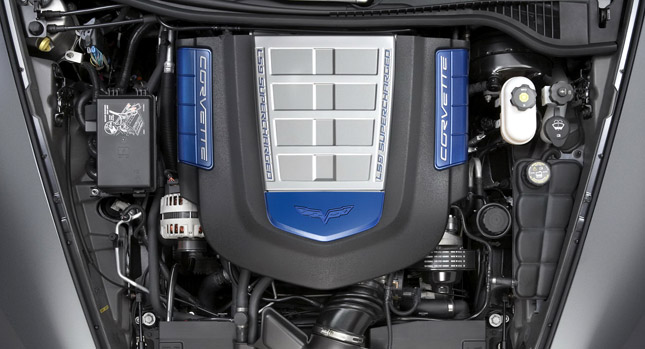It’s one of the most famous engine series in the world with a history spanning close to six decades. We’re talking about General Motors’ small block that was first introduced by Chevrolet in 1955 and which celebrates today its 100 million production milestone.
Fittingly, the landmark small block is a hand-built, 638-horsepower supercharged LS9 V8 that will find its way under the hood of a Corvette ZR1. The force-fed LS9 is the most powerful engine ever to be installed in a regular-production Chevrolet or GM vehicle.
Even though the vast proportion of small blocks were V8 engines, GM’s 100 million count includes the 4.3L V6 used in some Chevrolet and GMC full-size trucks and vans as the unit is based on the small block V8 but with two fewer cylinders.
Over the years, the small-block engine has been used in a great number of GM vehicles all over the world and is currently powering global Chevrolet, GMC and Cadillac vehicles, as well as Vauxhall cars in the United Kingdom and Holdens in Australia.
And it’s not only cars and trucks as revised versions of the original Gen I engine remain in production today for marine and industrial applications.
“The small block is the engine that brought high-performance to the people,” said David Cole, founder and chairman of Center for Automotive Research – and whose father, the late Ed Cole, was the chief engineer at Chevrolet that oversaw the development of the original small block in the 1950s. “There is an elegant simplicity in its design that made it instantly great when new and enables it to thrive almost six decades later.”
 The current, fourth generation of the small block get all-aluminum cylinder block and heads, while in some applications, it is also fitted with fuel-saving tech like the Active Fuel Management control that huts down four cylinders in certain light-load driving conditions.
The current, fourth generation of the small block get all-aluminum cylinder block and heads, while in some applications, it is also fitted with fuel-saving tech like the Active Fuel Management control that huts down four cylinders in certain light-load driving conditions.
While admitting that it’s not among the most advanced engines in the world, GM says that the current small block manages to compare favorably against other powerplants.
As an example, the Detroit maker gives the 430HP LS3 Gen-IV small block V8 that powers the 2012 Corvette. It accelerates from zero to 60mph (96km/h) in around four seconds, runs the quarter-mile in a little over 12 seconds and reaches a top speed in excess of 180 mph (290km/h) while returning and EPA-estimated highway fuel economy of 26 mpg.
GM provided a list of models that include both comparable sports cars like the Audi R8 and unrelated family models such as the Toyota Sienna to make its point (at least on the fuel economy front):
- The 2012 Audi R8 is EPA-rated at 21 mpg on the highway with a V-8 engine
- The 2012 BMW 650i coupe is EPA-rated at 23 mpg on the highway with a V-8 engine
- The 2012 Nissan GT-R is EP-rated at 23 mpg on the highway with a turbo V-6 engine.
- The 2012 Toyota Sienna minivan is EPA-rated at 24 mpg with a four-cylinder engine
- The 2012 Subaru Legacy sedan is EPA-rated at 25 mpg with a flat-6 engine
- The 2012 Nissan Maxima sedan is EPA-rated at 26 mpg with a V-6 engine.
“The small-block engine delivers guilt-free performance,” said Sam Winegarden, executive director and group global functional leader – Engine Engineering. “It is the quintessential V-8 engine and a living legend that is more relevant than ever.”
Perhaps more important than the production milestone is GM’s announcement that the fifth-generation of the small block is under development and it will feature a new direct-injection combustion system that the company claims will help enhance efficiency over the current Gen-IV engine.
“The Gen V engine is expected in the near future and is guaranteed to have 4.4-inch bore centers – the center-to-center distance between cylinders that has been part of the small-block’s architecture from the beginning,” GM said in a statement.
The Detroit-based automaker said that it is investing more than $1 billion in manufacturing facilities associated with the production of the Gen-V small-block, which will result in the creation or retaining of 1,711 jobs.
PHOTO GALLERY






















